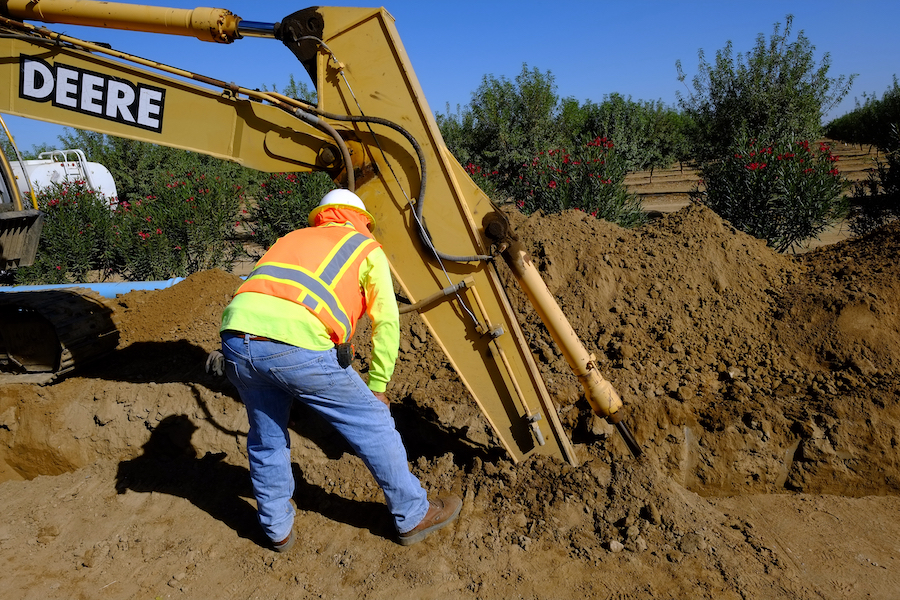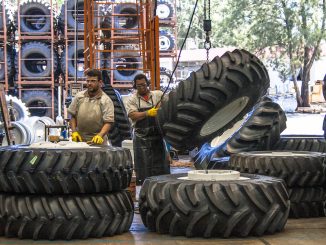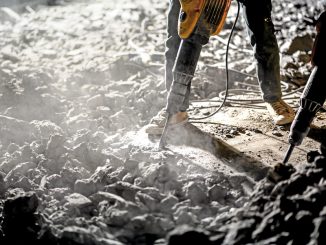
View the complete article here.
Whether they’re from OSHA, the health department, or any other regulatory agency, we know it’s not convenient when an inspector appears at your job site for an inspection. Sure, the OSHA inspector comes between you and a full day’s work when they pop in unannounced, their pen and clipboard at the ready to mark down any little thing that isn’t up to snuff. But putting aside that sense of annoyance, their job is not only thankless, they’re literally in the business of saving lives and protecting your team… as well as saving your business from costly lawsuits if the worst should happen.
In this article, we’ll take a look at some of the things they’re watching out for and talk about ways that you can be ready. It’ll save you time and money in the long run, but more importantly, it’ll protect the people who work hard for you.
What is the Purpose of OSHA Inspections?
OSHA, or “Occupational Safety and Health Administration,” was created by an act of Congress over fifty years ago to address a major concern, namely, workplace injuries and fatalities. One thing they discovered pretty quickly is that most workplace accidents, especially ones that led to serious injury or death, could have been prevented with a little bit of effort.
While some people dread even hearing about OSHA inspections, that’s not the way to think about it. Don’t look at it as a way for the government to show up, spy on you, and gleefully slap you with a fine when they catch you in a violation. Instead, think of the inspector as someone who helps you keep your company running, protects your team, and helps you avoid being liable for lawsuits or medical bills.
After all, you’re no doubt handling all the projects and workload you can take on. That means maintaining a safe job site can be difficult if everyone’s busting their rear ends to get the work done. Even little things that just fall by the wayside can lead to injury or even death, and an OSHA inspection will bring it to your attention while making you make it a priority.

What Makes an OSHA Inspector Show Up?
There are several different kinds of OSHA inspections, and the reasons for each one can vary. The biggest priority for any inspector is going to be imminent danger, or something that is just an injury waiting to happen. These are also the inspections that OSHA gets around to the fastest following any kind of report.
Next, OSHA is required to conduct investigative inspections following an injury or death. FYI, any job site death must be reported to OSHA within eight hours of the incident; an injury that requires hospitalization or involves an amputation or loss of an eye must be reported within 24 hours. During these inspections, OSHA may want to interview you and any employees who were present at the event. It’s a good idea to have your lawyer there for the inspection and interview, and remember, you do not have to allow yourself to be recorded if you’re not comfortable with that.
Following these kinds of inspections, the next biggest priority is most likely one that was triggered by an employee report. No one likes to think about one of their team members having to call in OSHA and stir up problems, but think of it this way—if your employee came to you with a safety concern and you dismissed it, you just might need a visit from an inspector to get yourself back on track and doing things the right way. Instead of feeling betrayed, be grateful that this employee might have spared you the headache, heartache, and damage to your business that comes from a workplace injury or fatality.
What is OSHA Looking for Anyway?
A health department inspector working their way through a restaurant has a checklist of measurable, scorable factors to look at, which makes their inspections a little more concrete. Unfortunately, your construction site isn’t quite so cut-and-dry. While you do have access to lists of regulations for workplace safety, it can all boil down to whether or not the inspector “thinks” something is a potential hazard.
Luckily, OSHA has compiled its regulations for various kinds of construction sites, which can be found here. This also means those regulations are right there in print for you to read and follow. Ignorance of an OSHA regulation is no excuse, especially when the inspector is standing on your job site, demanding to know why you’re doing something wrong.
There’s one other regulation all construction companies and job sites must keep in mind, and it serves as kind of a “catch all” regulation. Called the “general duty clause,” it basically says that if something is hazardous but isn’t explicitly stated in OSHA’s regulations, it was still your job to know about it and follow safe procedures.

The Five Most Common OSHA Violations
Over the years, an alarming trend in construction injuries and fatalities has emerged. The top five most frequent violations that lead to physical harm have stayed the same for years, in spite of regulations or inspections or awareness. In order of most common, these include:
- Fall Protection
- Hazard Communication
- Respiratory Protection
- Scaffolding
- Ladders
These are the most common violations, and yet, any construction worker or contractor can tell you immediately that these are also some of the most dangerous and fatal issues. Why? Why is it that the things most likely to get people killed are the most commonly ignored? Even more importantly, these issues are also ridiculously easy to secure, so why are so many people not doing even the most basic of safety measures? There’s no excuse for sloppy practices, especially when there’s so much at stake.
Of course, there are quite a few other things that OSHA inspectors are looking for. Again, these are things that can have devastating consequences for you and your team, but still make the top ten list of violations. They include:
- Control of Hazardous Energy
- Powered Industrial Trucks
- Fall Protection Training
- Eye and Face Protection
- Machinery and Machine Guarding
What Can You do to be Prepared for an OSHA Visit?
An OSHA inspector is certainly allowed to show up on your job site unannounced, though they don’t always do so. Some inspections (especially in the course of an investigation) are actually handled via phone or even email, at least in the initial fact-finding stage. At other times, the inspector will schedule a time to meet with you and conduct the inspection. They may seem like an unwelcomed visitor, but they truly aren’t trying to pull you away from your work on the day a concrete truck is pouring an expensive load, for example.
If the inspection has been triggered by a specific incident on your site, do your best to have everything you’ll need to show the inspector. Any documentation you have will be important, as will complete records of all your safety protocols, signed/dated logs of your safety trainings, any copies of your team members’ specific certifications, and more.
During an inspection, it’s a good idea to accompany the inspector and be prepared to take some notes. Have your tape measure and a flashlight with you so you can see specifically what they’re referring to. Take pictures or even videos of things that the inspector points out so that you can correct them immediately according to OSHA standards.
This fact sheet provided by OSHA contains very detailed information on not only how an inspection is conducted, but also what your rights and your employees’ rights are in the workplace.

Your Compliance Officer is Your “Safest” Bet
One of the most important steps you can take to protect yourself and your business or job site is to designate one of your employees to be a compliance officer. Having someone whose specific job duties include knowing the regulations and making sure that all safety protocols are followed will go a long way towards preventing any issues.
At the start or end of the workday, set aside time for everyone on your team to troubleshoot any hazards and bring them to your attention or your compliance officer’s attention. If anyone ever brings a concern to you, write it down—even if it’s just in a text message to yourself until you can get to a desk—so you have documentation of when the issue was presented, then make careful documentation of when you followed up and fixed it.
Should you find yourself face to face with an OSHA inspector, your compliance officer is someone who knows the regulations, knows the steps your business is taking to be safe, and should be able to have all the documentation you need.
What to do if You’re in Violation of OSHA Regulations
So, the inspector showed up… and you have some violations. What happens next? That depends largely on you. OSHA inspectors look for two distinct kinds of violations: willful and non-willful. A willful violation is obviously going to leverage a much heftier fine most of the time, but here’s a little secret—you’d be amazed how fast a non-willful violation can suddenly turn “willful” if your attitude is trash.
Instead of arguing, lashing out, or taking offense that this person is trying to keep someone on your team from getting killed, take it in stride. Be polite and cooperative, and you’ll be far more likely to get some flexibility and leeway during an inspection. Some companies have even reported being allowed to correct a violation on the spot and without consequence, all because the inspector got the impression that it was an honest mistake from a team that otherwise cares about safety and workplace hazards.

What to do if There is an OSHA Investigation
If there is an OSHA investigation into a specific incident (like an injury or fatality), your involvement is critical. While the inspector isn’t like a police officer who can walk in with a warrant and have free reign, they do have a specific job to do. Depending on the incident, they can also have up to six months to complete it, so you may be seeing a lot of this person.
As mentioned above, depending on the incident that sparked the investigation, you have a time limit on how long you have to report it. Immediately after, you need to inform you attorney and insurance provider of the incident, too. You can ask your lawyer to be present for all investigations and interviews, and remember, you do not have to allow the inspector to video or record anything.
It’s worth noting that an OSHA inspector cannot close your business. They don’t have that authority, and such a measure would involve repeated violations, warnings, and other concrete steps. However, they are able to put a stop to your workday for extreme disregard of common sense safety measures, let alone regulations. Nobody wants that, so make sure you’re not giving the inspector reason to do it.
At the End of the Day…
… Nobody wants to get hurt. That is the ultimate purpose of this entire administration, after all. Yet, according to OSHA statistics, there are about 5,000 workplace fatalities each year in the United States, or about one hundred every week. And it should come as no surprise that about 20% of all workplace fatalities happen in the construction industry.
Now imagine what those numbers would be without these regulations, without inspectors popping up on job sites and demanding that your team have safety harnesses or hard hats, or demanding that your heavy equipment is fully compliant. It’s too disturbing to think about, isn’t it? So, make sure that your company is following all the proper regulations for your type of work, and you won’t have anything to worry about when an inspector shows up.
View the complete article here.
What triggers an OSHA inspection, and how can I be prepared for one?
OSHA inspections can be triggered by imminent danger, workplace incidents, or employee reports; being prepared involves maintaining complete documentation, safety protocols, and compliance with regulations.
How can I handle OSHA violations, and what is the role of a compliance officer in ensuring workplace safety?
Handling OSHA violations requires cooperation, documentation, and a positive attitude; designating a compliance officer within your team helps ensure thorough knowledge of regulations and prompt corrective actions.












































